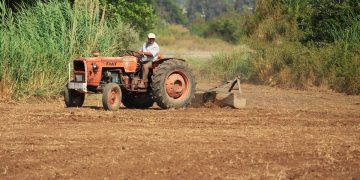Main findings of the August global overview:
- In Southern Africa, the main season has ended with a cereal output close to the 5-year average, and approximately 10% lower than last year’s record high (FAO). Winter wheat is progressing under favourable conditions in South Africa and Zimbabwe.
- Although rainfall improved in late July and in August in the northern part of East Africa, the region is still suffering the impact of exceptional and prolonged drought which has caused failure of first season crops and high livestock mortality in large parts of Ethiopia, Somalia, Kenya and South Sudan. A risk of famine condition has been reached as conflict, climate extremes, economic shock, rising food and energy prices are pushing millions towards starvation in East Africa. Without urgent assistance, Somalia is projected to face its second famine in just over a decade.
- In North Africa and the Middle East, winter cereals have been harvested and below-average yields are expected in Morocco, Algeria, Syria and Iraq. Irrigated summer crops are progressing under below-average conditions in northern Syria and Iraq due to a combination of reasons (damage to infrastructure, poor socio-economic conditions, ban on rice cultivation in Iraq).In Iran, rice production is expected to be close to average in the main producing areas. In Yemen, wheat and sorghum crops in the northern half of the country have benefited from heavy rainfall in July and August.
- In West and Central Africa, vegetation conditions are good across most parts of the region, however below-average conditions persist in north-eastern parts of Nigeria, south-eastern parts of Burkina Faso and in parts of Niger. Moreover, as of 16 August, across 17 countries in West and Central Africa, heavy rainfall and floods resulted in loss of lives, destruction of homes and infrastructure, damage to crops and livestock and displacement (OCHA). Many of the affected regions were already struggling with high levels of food insecurity, malnutrition, instability and violence.
- In Central Asia, winter crops have been harvested with favourable prospects. In Kazakhstan prospects for spring wheat are mixed. In Afghanistan biomass of spring cereals and summer crops is below average in most parts of the country except in the east. In South Asia, in Pakistan heavy rainfall caused flooding to 800,000 ha of cropland and orchards. In Bangladesh, harvest of Aus rice finished in August with good prospects, while conditions are favourable for growth of Aman rice. In Sri Lanka, 30% of the population is in need of food assistance due to a major economic crisis.
- In continental South-East Asia and the Philippines, prospects are favourable for wet season rice thanks to ample monsoon rainfall. In Indonesia, biomass of dry season rice is above average, pointing towards favourable prospects. In North Korea, rice and maize biomass is average to above-average in all provinces thanks to adequate moisture.
- In Central America, main season crop (primera) conditions are good thanks to generally favourable rainfall conditions, and harvest initiated in some areas. Dry conditions are observed in parts of central Cuba and south-east Haiti. In El Salvador and Haiti, aggregated cereal production is expected to be close to the 5-year average and ca. 16% below the 5-year average respectively (FAO GIEWS: El Salvador, FAO GIEWS: Haiti).
The next assessment is scheduled for the end of September 2022.
O artigo foi publicado originalmente em JRC.




















































